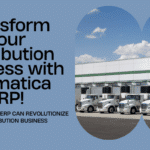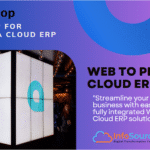
About Ink
Location: Maumelle, Arkansas
Industry: Distribution, Retail & eCommerce
Website: https://inkcustomtees.com/
Size: 50+ Employees
Key results for Ink
![]() Integrated mission-critical PrintShop application
Integrated mission-critical PrintShop application
![]() Eliminated manual double entries into siloed applications, saving time
Eliminated manual double entries into siloed applications, saving time
![]() Streamlined print operations and project scheduling with PrintShop
Streamlined print operations and project scheduling with PrintShop
![]() Improved customer service for artwork tracking and approval management, reducing errors
Improved customer service for artwork tracking and approval management, reducing errors
![]() Gained one version of financial truth, eliminating siloed applications
Gained one version of financial truth, eliminating siloed applications
![]() Eliminated the need for on-premises hardware & security infrastructure, lowering costs
Eliminated the need for on-premises hardware & security infrastructure, lowering costs
Challenges
Since 1988, Ink has been an industry leader in helping brands, groups, and events launch successful merchandising campaigns. The company produces some 10,000 T-shirts a day during its busy season for customers, including the Cotton Bowl, the Friendship of Christian Athletes, Mack’s Prairie Wings, and St. Jude Children’s Research Hospital, among others. Operating in a highly competitive industry, the company helps “create well-designed, retail-quality shirts that people actually want to wear.”
In the early days, CEO Holt Condren helped schools and university fraternities and sororities create custom T-shirts. Recognizing that eye-catching graphics were a big part of his success, he convinced now-business partner Scott Masters to create exclusive, cool designs, which garnered attention from large brands like Levi Strauss and others who signed on as customers.
“We don’t make T-shirts that end up in the bottom drawer, and you only wear mowing the lawn or washing the car,” says Caleb Harris, Senior Vice President Business Development. “These are T-shirts that achieve ‘top drawer’ status to be worn on a Friday night out. Our people employ themselves to create a shirt worthy of your brand. When you have a great brand, why would you settle for a lower quality T-shirt no one wants to wear, when, with expert guidance, great custom artwork, and quality screen-printing, you will end up with a quality product that people will rave about for years to come?”
Ink took a familiar route to find software tools to support the business as it grew when it came to efficiency. First, they looked for financial software made for the printing industry. When executives couldn’t locate an industry-specific system, they hired a development team to write a custom program for their unique screen-printing business.
Unfortunately, the custom-built software was limited, and so they implemented Everest, a business management software product that required custom programming to make it work the way they needed. When support ran out for the antiquated SQL server running Everest, they learned the custom programming would most likely break as they moved to new servers.
“We then toiled for over a year and a half and took a leap of faith with Cyrious’ Control, which we thought was industry specific,” says Harris. “We quickly learned that while it was convenient, it couldn’t scale.”
Early versions worked fine when the company ran just one or two presses and did 1,000 shirts a day. However, the system couldn’t keep up with the business’ ever-increasing online orders, or the additional 11 presses that swelled production to upwards of 10,000 shirts a day.
Siloed Applications Demand Duplicate Entries
Multiple daily orders, the logistics of running multiple presses a day, and Ink’s commitment to deliver orders on time require a vast amount of detailed precision and a high level of complexity. Ink leaned heavily on siloed applications, forcing the accounting team to enter data into multiple systems manually.
Cyrious’ Control software lacked budgeting, so Condren exported data to spreadsheets to analyze how the company was performing, a time-consuming and error-prone exercise. Control also lacked adequate inventory controls, which led to costly inventory adjustments from time to time, he says.
Eventually executives decided they needed a connected system, one that could handle print industry functions. For example, Ink needed a way to handle its artwork version and approval process more efficiently and with fewer errors. It also needed a way to capture and store specific screen-printing information, such as pressure, squeegee type, and how much ink was used in a design for accessibility of reorders.
ERP Solution
ERP Leader with Open API
Ink executives researched several solutions, including Oracle NetSuite, and print industry-specific solutions. “Printavo didn’t quite have the scale, and InkSoft was pretty clunky,” Condren says.
During an internet search, they discovered Acumatica and a partner, PrintShop. “We were starting to go with another company, but we kept hitting a wall because they couldn’t dispel our fears around taking another leap of faith,” Harris says.
Knowing PrintShop would be pivotal to the ERP implementation, Ink called PrintShop creator InfoSourcing, and company owner Harsha Sarjapur. “It was a good fit; we could tell immediately,” Harris says.
PrintShop for Acumatica helps print shops, embroidery companies, and promotional product distributors with automation and management of their production processes. The solution allows companies to follow transactions from quotation to print production, handles daily inventory management, shipping, and job setup screens/data, all while integrating seamlessly with Acumatica’s out-of-the-box ERP modules.

Outcome


With Acumatica, Ink executives now have access with a click of a button to actual financial dashboards. They no longer waste time performing time-consuming exports and analysis. “We have much better faith in our financial and inventory numbers, and we’ve streamlined our processes with Acumatica. We’re also moving through printing processes at a faster rate with PrintShop,” says Condren.
Acing repeat orders and delivering products on time is crucial to Ink’s success in the highly competitive industry. PrintShop and Acumatica’s seamless integration allows the company to continue to deliver excellent customer service. “Job scheduling functionality is crucial at Ink. Much of the other software didn’t have that same scheduling ability,” Harris adds.
Nor did most print specific software include the ability to capture detailed information such as pressure, mesh count and precise ink combinations, which is critical for a screen printer when printing repeat orders. PrintShop delivers on those tasks, while Acumatica gives the Ink team the budgeting, inventory control, and cloud capabilities they require.

Quick Acumatica Implementation Gives Established Firm a New Edge
Ink implemented Acumatica in just four months, going live during its busy season and making executives nervous. “We worried we’d be a little late on our jobs in progress, but we went live and remained busy, coming through the season in good shape,” says Condren. “Looking back, we know we made the right decision to go with Acumatica and PrintShop when we did.”
“Acumatica’s accounting is deeply integrated with the ERP so we can do a really good job of analyzing our data,” Condren adds. “Most small businesses don’t last 31 years. We have grown over the years because we’ve learned to watch our budget closely. With Acumatica, I can instantly see the budget and what we are doing against it using GI’s and dashboards,” he says.
Another huge plus is Acumatica’s ability to scale and provide for better inventory management. “Our business continues to evolve, and we are doing more in the area of inventory fulfillment,” Condren says. “Acumatica tracks inventory in the right categories for us and provides for drill down to see the specifics on what’s behind the number. Acumatica is already doing more than our last system could, giving us a competitive edge.”
Ink previously prioritized which users could access the system since seat licenses were often limited to 12, and adding users was cost-prohibitive – around $500 a month. “It always felt before like we were being yanked around and penalized for adding new users. Now, all our artists can have access to the solution. It’s nice to include as many users as we need to run the business no matter what their position or how often they need access. It’s been a huge benefit.”
Affordable Access for All Users
Condren adds, “With Acumatica, we now have a platform that can scale without penalizing us for doing well; encouraging sales growth, not hindering it.”
Multiple Third-Party Connected Applications
In addition to PrintShop, Ink has implemented several applications that seamlessly connect with Acumatica. Those third-party applications include ShipStation, eBizCharge, and Shopify. Ink is launching a new website so orders can flow into its financial system seamlessly.
Acumatica Cloud ERP provides an open architecture framework for development that allows third-party applications to easily integrate to extend Acumatica to meet the unique needs of growing small and mid-market organizations. InfoSourcing is one of a growing community of third-party developers who specialize in building vertical solutions to solve business problems.
Ink is also integrating Acumatica’s CRM, and has plans to add a customer portal, Harris says. “We want to eliminate manual order entry where possible with a fill-in form on our website to automatically generate project quotes,” he says. “l love the idea that our customers will have one place where they can view information on their orders and the status of that order (production date, print date, invoice),” Harris adds. “It’s technology like this that puts us one step ahead of our competition rather than being a step behind.”
Future Proof Foundation for Growth
In addition to becoming a fulfillment arm for its commercial customers, Ink continues to add other promotional items and services to its lineup and is armed with a technology solution that easily scales.
“Acumatica has been a game-changer,” Condren says. “We’re finally on the one solution that is right for our business where we can scale and not be anchored down with disconnected external systems.”
Story highlights:
- Switched from Cyrious’ Control software to Acumatica
- Evaluated Oracle NetSuite & print industry-specific software
- Integrated mission-critical PrintShop application
- Provided real-time business insight for data-driven decision making
- Acquired a single, connected platform for growth, eliminating siloed applications
- Eliminated manual, paper-based order entry and duplication
- Improved customer service for artwork tracking and approval management, reducing errors
- Increased visibility into inventory, reducing adjustments
- Gained unlimited user licensing, allowing for greater employee collaboration
- Acquired a connected platform for growth, eliminating daily frustration
- Lowered IT expenditures by eliminating the need for on-premises hardware & security infrastructure






